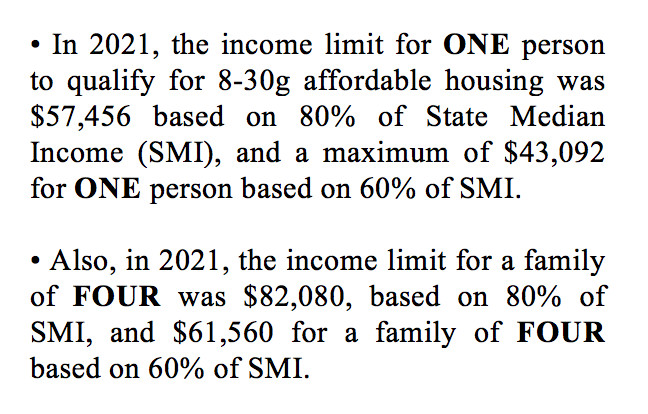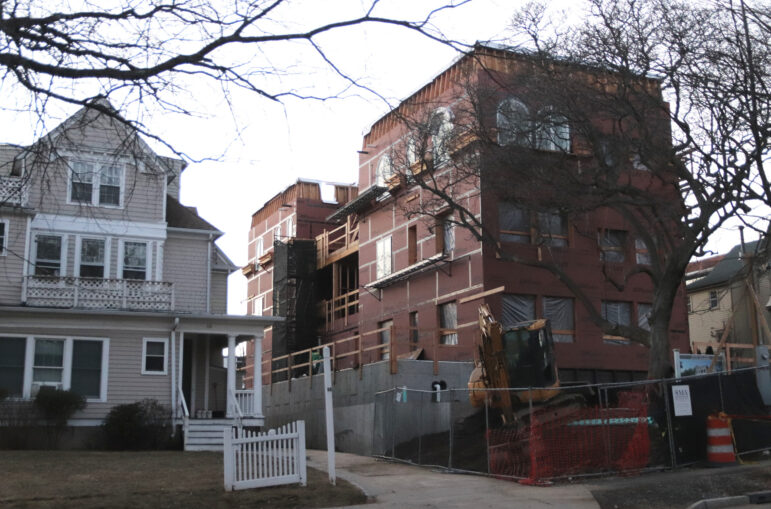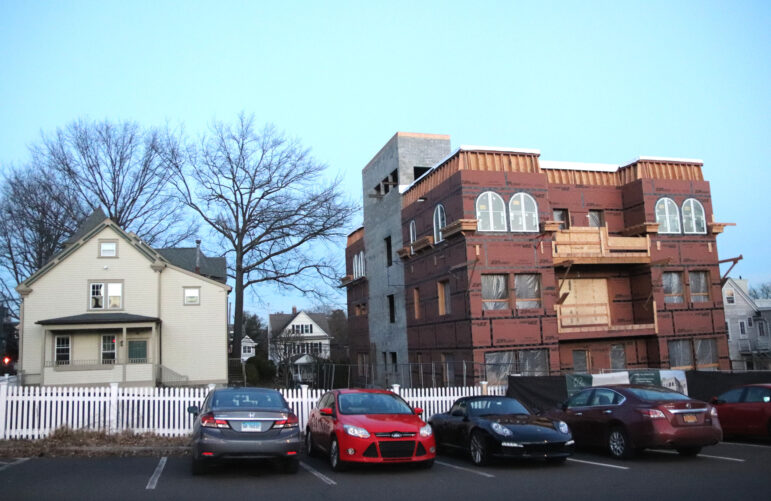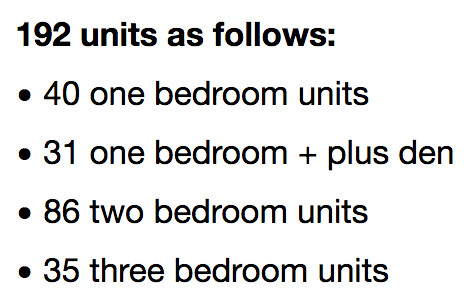Greenwich has historically been a pricey place to buy or rent a home. Everything costs more – not just mansions, but even small fixer uppers and rental apartments, if you can find them. While it is expensive to get a foothold, the trade offs for buyers include that Greenwich’s property taxes are famously low and, over time, houses have held their value.
Of course the town is not immune to fluctuations.
Recall the Great Recession when properties lingered on the market, especially the multi-million dollar homes. There were even abandoned homes and spec houses left in mid construction.
A New York Times article in 2008 struck an optimistic tone, saying, “Bad times won’t last forever. Greenwich has seen tough real estate markets before, and it’s an item of faith in town that Greenwich is the last market to go down and the first to come back.”
But the grim market persisted. In 2016, the joke heard around the world was courtesy of Barry Sternlicht who said, ‘You can’t give a house away in Greenwich.’
In 2017 the RTM approved, by a single vote, a Town contribution of $30,000 toward a $100,000 public relations campaign at the urging of then First Selectman Peter Tesei’s Economic Advisory committee committee. A hired PR agency was tasked with generating a buzz on social media and creating content to convey the message that Greenwich is hip, not stodgy.
“There’s a pearls-and-Mercedes view of Greenwich,” Sabine Schoenberg said at the time. “That’s not how we want to the world to see us.”
When the real estate market was shocked to life during the pandemic, largely a result of affluent New Yorkers, able to work from home and eager for fresh air, green space and the coveted swimming pool – rental prices rose with the tide. Some Greenwich homeowners have rented their entire houses for large sums.
Greenwich is hardly affordable to renters living on a budget – especially renters with a capital A, those who qualify for Affordable housing based on their income.

In Connecticut, State statute 8-30g mandates that 10% of all 169 municipalities’ housing stock be “Affordable” per their formula based on State Median Income.
Under 8-30g, developers like Church-Sherwood who set aside 30% of their rental units as “Affordable” are exempt from local zoning including height and setbacks.
The law has been on the books since 1989, but with land increasingly scarce and expensive, developers are turning to 8-3og and using it to propose bigger and bigger developments.
Today, the town is trying to imagine the impact of a slew of proposals for multi-story apartment buildings along Rte 1 and Greenwich Avenue, including Joe Pecora’s development at 5 Brookridge, John Farari’s J Lofts West at 240 Greenwich Avenue and Joe Tranfo’s development on Benedict Place and Benedict Court.
Last Monday, New York City-based real estate developer, SJP Properties, and local developer, Eagle Ventures, founded in 2010 by Greenwich native James P. Cabrera, submitted an application for final site plan and special permit for a seven-story, 192-unit building that would replace several buildings on Church Street and Sherwood, in the historic Fourth Ward. (The application materials are publicly available from the Planning & Zoning Dept at Town Hall).
The same day, the PR agency for the developers issued a press release referring to an “urgent need among Greenwich’s existing workforce, many of whom have been priced out of the market due to the lack of affordable housing, and a near absence of available rentals in the area.” The release went on to mention public sector workers, including police and teachers specifically.
This mention of “workforce” could be misleading. What is proposed with the Church-Sherwood development is not moderate income housing, also known as “workforce housing.” It is an 8-30g Affordable housing development, and the income qualifications are entirely different.
Greenwich’s own building zone regulation 6-110 incentivizes the creation of “workforce” housing. The income thresholds to qualify are higher than under 8-30g.
In fact, 6-110 is intended to incentivize housing for town employees, including police officers, firefighters and teachers, as well as teachers and employees of non-profits who do not typically qualify for 8-30g because they earn too much.

Income Qualifications for “Workforce” Housing
“Workforce,” or moderate income households have an aggregate income, including all household members (except earnings of working minors attending school full-time), averaged for the preceding two years, that does not exceed the following multiples of the median annual Town wages for all full-time Greenwich employees and teachers (ending June 30, 2021), which was $86,963:
1 Person Household – (1.2 x $86,963) = $104,356
2-3 Person Household – (1.5 x 86,963) = 130,445
4-5 Person Household – (1.8 x 86,963) – $156,533
6 Person Household – (1.9 x $86,963) = $165,230
Not long ago, P&Z issued a moratorium on the 6-110 regulation.
The moratorium came after an application at 62 Mason Street surprised everyone by its sheer bulk.
The application went before both P&Z and the Architectural Review Committee multiple times, and the developer complained he was forced to spend large sums on attorneys and consultants during the process. The Tree Conservancy complained that a mature town tree would be cut down to allow for a wide curb cut. Experts testified about the health of a Magnolia tree as old as the 1890 house that was torn down to make way for the development.
In the end, the development was approved.
Then came the moratorium.
Today, the building at 62 Mason Street is inching closer to completion with 7 units in total, two of which are designated for “workforce.”
The moratorium on 6-110 is over and the regulation has been revised.
But why would any developer want to use it when there is 8-30g available?

About 5600 units would need to be created under 8-30g to achieve the approximately 1250 Affordable units the state requires for Greenwich to achieve 10% Affordable housing stock.
That begs the question, will there be a supply of tenants for that many units?
What happens when interest rates go up, or when there is another economic downturn?
What will be the impact to traffic and infrastructure of 10,000+ new residents?
Our First Selectman has warned against increasing impervious surface given recent extreme flooding.
At 5 Brookridge, which is outside the town sewer boundary, five stories and 86 units are proposed in an 8-30g. Neighbors are asking about sewer capacity for 100+ bathrooms.
At Church-Sherwood, who would seek to live in the market rate units? Not so many families, given there are only 35 three-bedroom units out of 192. Maybe the public sector workers and hospital staff would gravitate to the market rate units?

Often times police officers, fire fighters and teachers with families prefer to live up the line where they can afford a single family house with a yard, opting for towns like Shelton, Trumbull or Easton.
Last October, at P&Z’s pre-application hearing for Church-Sherwood, Sam Romeo, chair of the housing authority (Greenwich Communities) board, said, “If they’re going to boast about housing families, they wouldn’t have so many one-bedroom units.”
“I think this application is an abuse of 8-30g to the extent you’re building a lot of one bedroom apartments,” Romeo said. “It really doesn’t serve working families.”
The next P&Z hearing on the Church-Sherwood “Affordable” housing proposal will be interesting. Just don’t call it workforce housing.
Neighbors Vent Opposition to 8-30g on Church and Sherwood; Destruction of Historic District Considered October 2021
Final Site Plan for Controversial Church & Sherwood 8-30g Submitted to P&Z Feb 18, 2022
192-Unit Affordable Housing Development Would Raze Restaurant, Historic Houses September 2021